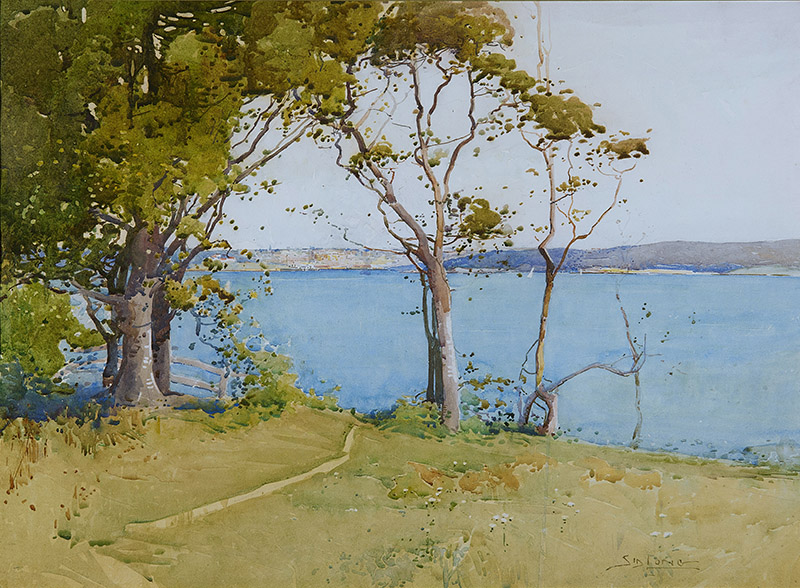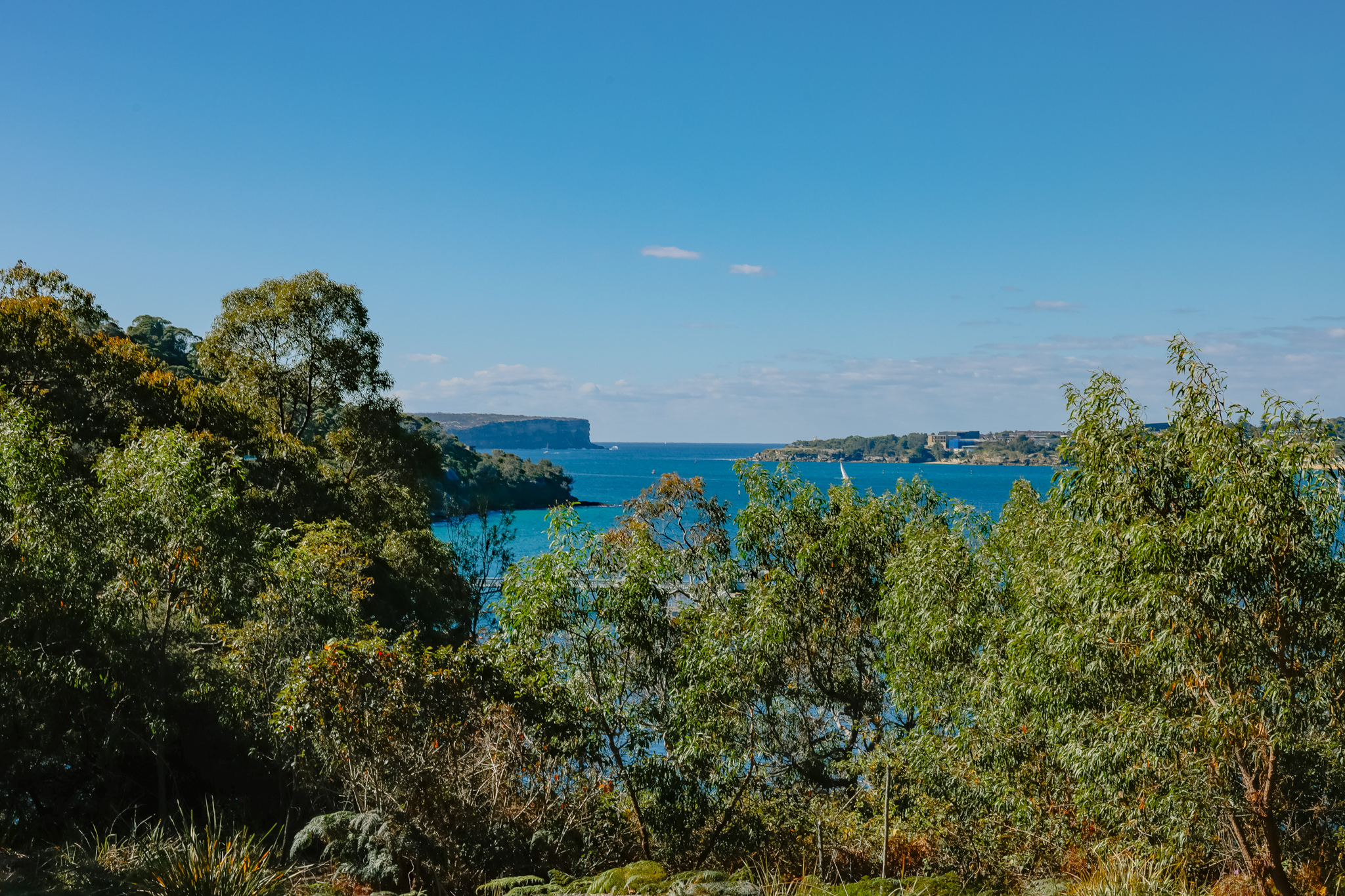Sydney Long
Clifton Gardens, 1905

Mosman Art Trail Sign 5 located end of Taylors Bay Track below Morella Rd.
Listen to an audio recording, read by Claudia Karvan, to learn more about this artwork.
In his 1906 autobiographical memoir the visiting English novelist Joseph Conrad described Sydney Harbour as “one of the finest, most beautiful, vast, and safe bays the sun has ever shone upon”. 1 Indeed it is this same awestruck vision of radiant beauty, stillness and intimate safety that Sydney Long presents from Clifton Gardens in this simple watercolour painted just a year prior, in 1905. Sydney Long is best known for his decorative symbolist paintings in which he attempted to create a mythology for the burgeoning nation of Australia, one based in the natural world. Surprisingly for his time, Long often placed First Nations Australians in the centre of these myth-making scenes, acknowledging in part the appropriated histories upon which modern Australian society was being built. 2
The same year this work was painted, the artist expressed his vision, penning an article in favour of “the joy of making new ones [artistic traditions] suitable to his [Australian] surroundings”, calling on artists to “express the lonely and primitive feeling of this country”. 3 Almost entirely devoid of human presence save for a couple of miniscule white sailing boats, Long’s scene of Clifton Gardens is one of a secret sanctuary, with a clifftop clearing revealing vast views over a brilliant stretch of turquoise water, the natural environment majestic and all powerful. It is a still day with strong noonday sun bathing the whole view in brilliant light. Painted with even washes of watercolour paint, Long’s surface is flat and decorative, the sea a uniform plane of translucent turquoise, a radiant band across the centre of the composition. The colours are bright and cleanly outlined, revealing a graphic quality inherited from Long’s past as a commercial illustrator. The greatest detail is within the artist’s characteristic sinuous gum trees, providing a touch of Art nouveau stylisation to this view, and through which the viewer can see the yellow and pink sandstone cliffs of North Head. Having adopted the habit of painting en plein air from his tutor, Julian Ashton, Sydney Long painted this view from the headlands above Clifton Gardens many times. This idyllic section of bushland was a special destination for artists during the turn of the 20th century, with many artists painting from here tightly cropped bush views and harbour studies.
In 1905 Clifton Gardens was the site of a well-known pleasure ground with patrons travelling by ferry to visit. At this time, it was on the cusp of being purchased and refurbished by Sydney Ferries, transformed into a much larger entertainment complex on the foreshore, including dancehalls and an enclosed swimming pier responding to newly relaxed public bathing laws.4 Although very popular, these rowdy venues are far from view in Sydney Long’s quiet painting, which, beyond a beaten path through bright green grass, displays very little evidence of human intervention into the landscape. Viewed from on high and from afar, the glassy surface of the harbour is gleaming and unattainable, a pristine natural asset to be admired and preserved.
1 Conrad, J., The Mirror of the Sea, third edition, Methuen and Co, London, 1907, p. Xxxiv
2 Mendelssohn, J., Sydney Long, S.H. Ervin Museum and Art Gallery, National Trust, Sydney, 1979, p. 5
3 Long, S., ‘The Trend of Australian Art Considered and Discussed’, Art and Architecture, Sydney, January 1905
4 Sturrock, R., A Pictorial History of Mosman, Griffin Press, South Australia, 1983, vol.1, pp. 13 - 14
Text by Lucie Reeves-Smith.
PROVENANCE
possibly: Mason Gray, Sydney, 20 June 1988, lot 139 (as ‘Clifton Gardens’)
Lawson’s, Sydney, 23 April 2001, lot 83 (as ‘Sydney Harbour’ (illustrated))
Balnaves Collection, Sydney
Mosman Art Gallery, Sydney, a gift from the above 2011
Photo credit Jacquie Manning
SYDNEY LONG
(1871 - 1955)
CLIFTON GARDENS, 1905
watercolour on paper
39.0 x 54.0 cm
signed lower right: SID LONG






